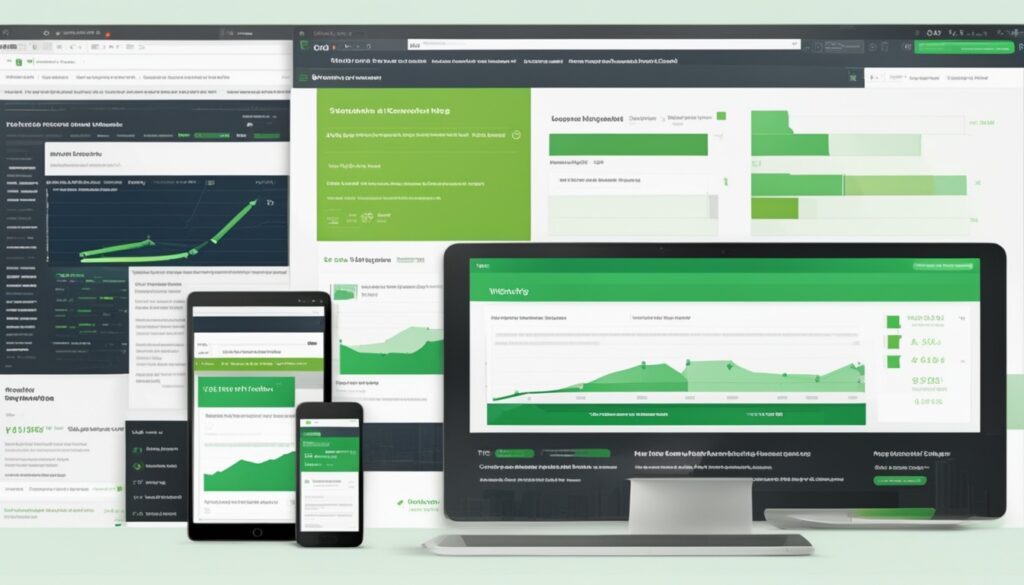Search engine optimization (SEO) is the backbone of any successful online presence. Among the three main pillars of SEO – on-page, off-page, and technical – on-page SEO is the most within your control. By strategically optimizing the elements on your web pages, you can significantly boost your rankings and drive more targeted traffic to your site.
On-page SEO refers to the various page-level elements that enable search engines to crawl, index, and understand the content on your website. From keyword-rich content and metadata to site architecture and technical optimizations, on-page SEO encompasses a wide range of factors that contribute to your overall search engine visibility.
In this comprehensive guide, you’ll discover the most effective on-page SEO techniques that can take your website’s search rankings to new heights. Whether you’re a small business owner, a digital marketer, or a content creator, the strategies outlined here will empower you to take control of your online presence and attract more qualified leads and customers.
Key Takeaways
- On-page SEO is the process of optimizing individual web pages to improve their visibility and ranking in search engine results.
- Key on-page SEO elements include content, HTML tags, and site architecture.
- Effective on-page SEO techniques involve keyword research, content optimization, metadata optimization, and technical website improvements.
- Optimizing your website’s visual content, such as images and videos, can also contribute to better search rankings.
- Continuously monitoring and refining your on-page SEO efforts is crucial for maintaining and improving your search engine visibility.
What is On-Page SEO?
On-page SEO, also known as on-site SEO, is the process of optimizing various elements on your website to improve its visibility and ranking in search engine results. This encompasses a wide range of factors, from the content you create to the structure and technical aspects of your website.
Content Elements
Effective on-page SEO starts with the content on your website. This includes conducting thorough keyword research to identify the terms and phrases your target audience is searching for. Tools like Google Keyword Planner, Ahrefs, and AnswerThePublic can help you uncover valuable insights. Additionally, incorporating visual content such as images, graphics, and videos can enhance the user experience and make your pages more engaging.
HTML Elements
The HTML elements on your web pages also play a crucial role in on-page SEO. This includes optimizing your page titles, which should be concise and accurately reflect the content of the page. Headers (H1, H2, H3) help structure your content and make it easier for both users and search engines to navigate. Meta descriptions, the short summaries that appear in search results, should be compelling and include relevant keywords. Image alt-text and structured markup (such as schema.org) further help search engines understand the content on your pages.
Site Architecture Elements
The structure and organization of your website, known as site architecture, also play a significant role in on-page SEO. Page URLs should be clean, descriptive, and easy to read. Internal linking between your pages helps visitors explore more of your content and signals the importance of certain pages to search engines. Ensuring your website is mobile-responsive and has fast page speeds are also crucial on-page SEO factors that can impact your search rankings.
By optimizing these content, HTML, and site architecture elements, you can significantly improve the visibility and performance of your website in search engines, driving more targeted traffic and potential customers to your online presence.
On-page SEO techniques for better ranking
Conducting thorough keyword research is the first step to creating high-quality content that resonates with your target audience. Consider how your page content aligns with the buyer’s journey and visitors’ search intent. For example, awareness stage content may include blog posts and the homepage, while decision stage content could highlight product demos and pricing pages.
Once your keyword phrases are selected, optimize your page content by incorporating them naturally into the page title, headers, body copy, and image alt-text. Utilize structured markup to make it easier for search engines to understand your content. However, don’t sacrifice good writing for SEO – the best pages are crafted with the user in mind, not just the search engine.
Optimize Metadata
Metadata, or information about the contents of your page, is crucial for effective on-page SEO. Title metadata is responsible for the page titles displayed in search results and should include your target keyword. Description metadata is the textual description that may be used in search results, and should be a concise and appealing summary of your page’s content. Keyword metadata, while rarely used by search engines, can still be a good place to include your target keywords.

Optimize Your Website Structure
Crafting an efficient website structure is crucial for enhancing your search engine optimization (SEO) efforts. By organizing your site in a logical and user-friendly manner, you can make it easier for Google and other search engines to crawl and index your pages, ultimately improving your visibility and rankings.
One key aspect of optimizing your website structure is using simple, keyword-rich page URLs. Avoid complex, convoluted URLs that don’t reflect the content of the page. Instead, opt for clean, descriptive URLs that include your target keywords.
Implementing a well-structured internal linking system is another crucial step. Internal links not only help users navigate your site but also signal to search engines the relationships between your pages. Strategically place relevant links within your content to guide both visitors and crawlers through your website.
To further enhance your website structure, consider the following best practices:
- Organize your content into logical, hierarchical categories and subcategories.
- Ensure your navigation menu is intuitive and easy to use.
- Avoid orphan pages, which are pages with no internal links pointing to them.
- Regularly audit your site structure and make necessary adjustments to improve user experience and search engine optimization.
By optimizing your website’s structure, you’ll create a seamless and efficient user journey, while also making it easier for search engines to understand and rank your content. This holistic approach to on-page SEO can have a significant impact on your overall online visibility and success.
| Best Practices for Optimizing Website Structure | Benefits |
|---|---|
| Use simple, keyword-rich page URLs | Improve search engine indexing and user experience |
| Implement a logical internal linking structure | Guide users and search engines through your site |
| Organize content into hierarchical categories | Enhance navigation and content discoverability |
| Avoid orphan pages | Ensure all pages are connected and accessible |
Visual Content Optimization
In today’s visually-driven digital landscape, optimizing your website’s visual content is crucial for boosting your on-page SEO. From captivating images to engaging videos, mastering the art of visual content optimization can help you climb the search engine rankings and connect with your audience in a more impactful way.
Image Optimization
Images are a powerful tool for grabbing your audience’s attention and conveying your message effectively. To ensure your images are working their hardest for your SEO, pay close attention to image optimization. Start by using descriptive image alt-text that accurately reflects the content of the image, making it easier for search engines to understand and index your visuals.
Video Optimization
Videos are an increasingly popular form of content, and optimizing them for search engines can significantly improve your on-page SEO. In addition to uploading high-quality video content, be sure to provide detailed video transcripts and descriptions to help search engines better understand and index your multimedia offerings.
By leveraging the power of visual content optimization, you can unlock a wealth of SEO benefits and deliver a more engaging, informative experience for your website visitors.

Technical On-Page Factors
As you strive to optimize your website for better search engine rankings, it’s crucial to address the technical on-page factors that can make a significant difference. Three key elements to focus on are mobile responsiveness, site speed, and structured data.
Mobile Responsiveness
In today’s mobile-centric world, ensuring your website is optimized for seamless user experience on various devices is paramount. Google prioritizes mobile-friendly websites in its search results, so make sure your site’s design and content adapt flawlessly across smartphones, tablets, and desktops.
Site Speed
Website speed is another crucial factor in on-page SEO. Users expect fast-loading pages, and search engines favor websites that provide a smooth, efficient browsing experience. Optimize your images, minify your code, and leverage caching techniques to enhance your site’s speed and deliver content quickly to your visitors.
Structured Data
Implementing structured data markup on your website can help search engines better understand and display your content in the search results. This includes schema.org markup, which provides detailed information about your pages, products, events, and other elements. By utilizing structured data, you can improve your website’s visibility and enhance the user experience.
| On-Page Factor | Impact on SEO | Optimization Strategies |
|---|---|---|
| Mobile Responsiveness | Improved user experience and higher search engine rankings |
|
| Site Speed | Faster page load times and better user engagement |
|
| Structured Data | Enhanced visibility and better understanding of content by search engines |
|
By addressing these technical on-page factors, you can take a significant step towards improving your website’s search engine rankings and delivering an exceptional user experience.
Measure and Refine
Effective SEO is an ongoing process that requires regular monitoring and refinement. By closely tracking your website’s SEO performance, you can make informed decisions to optimize your on-page strategies and drive better results. Let’s explore the key aspects of measuring and refining your SEO efforts.
Regularly Monitor SEO Reporting
Utilize powerful tools like Google Search Console and Bing Webmaster Tools to monitor your SEO reporting. These platforms provide valuable insights into your website’s search engine performance, including:
- Search impressions and clicks
- Organic search rankings
- Crawling and indexing issues
- Technical SEO problems
By regularly reviewing these metrics, you can identify areas for improvement and make data-driven decisions to enhance your SEO strategies.
Analyze Performance Monitoring
In addition to SEO reporting, consider integrating comprehensive performance monitoring tools into your workflow. These tools can provide a deeper understanding of your website’s user behavior, engagement, and conversion metrics, which can further inform your optimization efforts. Some key performance indicators to track include:
- Bounce rate
- Time on page
- Pages per session
- Conversion rates
By combining SEO reporting and performance monitoring, you can gain a holistic view of your website’s performance and make informed decisions to refine your on-page SEO strategies.
| Metric | Description | Importance for SEO |
|---|---|---|
| Search Impressions | The number of times your website appears in search engine results | Indicates the visibility and reach of your content in search engines |
| Click-Through Rate (CTR) | The percentage of users who click on your website’s search result | Reflects the relevance and attractiveness of your content to users |
| Organic Rankings | The position of your website in search engine results for specific keywords | Higher rankings translate to increased visibility and potential for more traffic |
| Bounce Rate | The percentage of users who leave your website after viewing only one page | Indicates the relevance and quality of your content to users |
By regularly monitoring these key metrics and making data-driven refinements to your on-page SEO strategies, you can continuously improve your website’s search engine performance and drive more qualified traffic to your business.
Conclusion
By leveraging the on-page SEO techniques outlined in this article, you can significantly boost your website’s visibility and rankings in search engine results. From conducting keyword research to optimizing your content, HTML elements, and site structure, these strategies empower you to make your pages more search engine-friendly and user-centric.
Regularly monitoring your website’s performance and making necessary refinements will help you sustain long-term SEO success. Remember, the key to effective on-page SEO lies in creating high-quality, valuable content that resonates with your target audience while aligning with search engine best practices.
Implementing these on-page SEO tactics will not only enhance your website’s search engine rankings but also improve the overall user experience, driving more qualified traffic and, ultimately, boosting your business’s online presence. Start optimizing your pages today and watch your search visibility soar.
